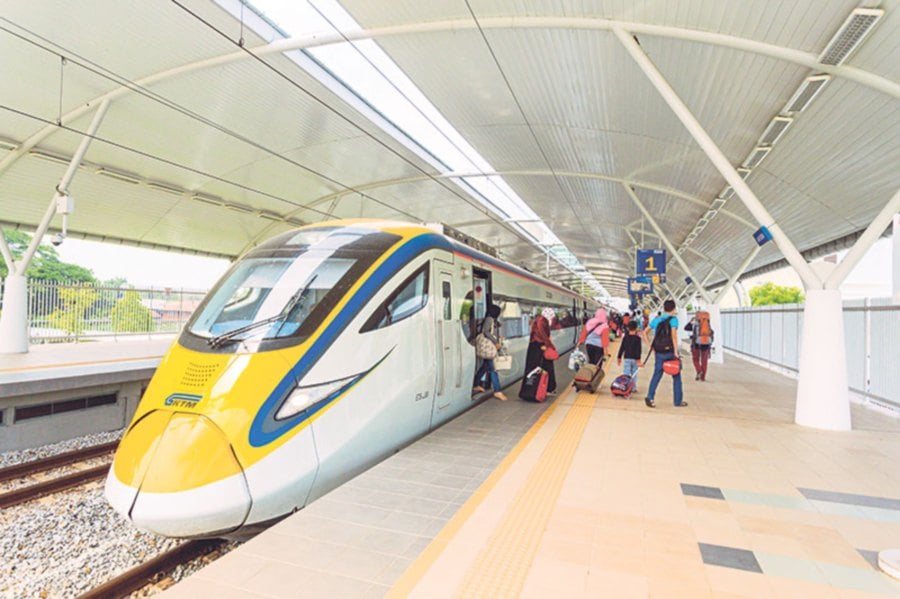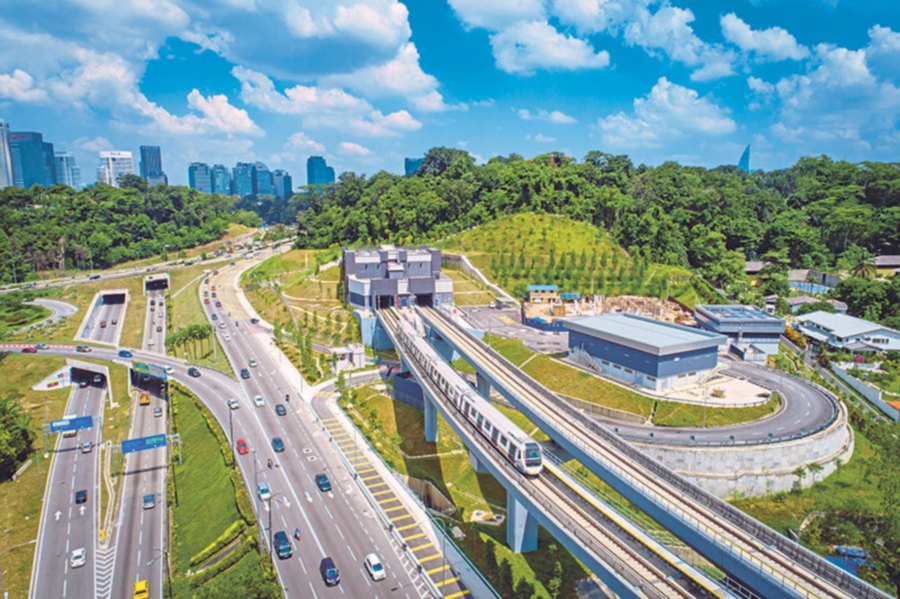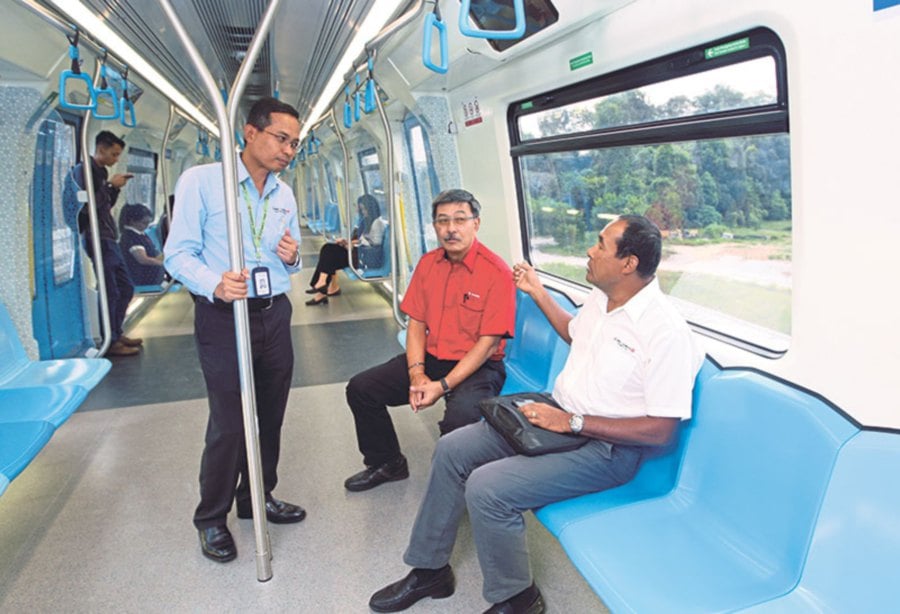KUALA LUMPUR: FOR many of us who were born in the 1990s, we would have only dreamt of riding on the Mass Rapid Transit (MRT) in Singapore.
Back then, that was the only country nearest to us that owned a MRT.
“No one drives in Singapore,” most would say, simply because the MRT is so well connected throughout the country there was almost no need for personal vehicles.
All you needed to do is get on to a public bus or a taxi that brings you to the nearest MRT station, while some stations are even reachable on foot.
We marvelled at the idea for more than two decades with some wondering if Malaysia could have its very own MRT.
The answer is yes, and the country is about to witness the opening of the MRT Sungai Buloh–Kajang (SBK) Line’s second phase come July 17.

What is even more inspiring is that, somewhere out there, a proud parent is able to say, “Malaysia now has its own MRT, and my son was in charge of developing and building this station.”
Similarly, an engineer or a geologist who was part of the research and development team behind the tunnelling and construction of respective MRT stations are able to say, “We made it. We were part of this massive project.”
Behind these rails
Because the MRT had always been a ‘foreign idea’, in the eyes of the Malaysian public, it is only natural that it be managed and built with foreign expertise.
That is no longer the case as Gamuda had over the last 15 years built-up strong expertise in rail infrastructure and had evidently contributed in projects such as the Kaohsiung MRT in Taiwan, the Ipoh-Padang Besar Double Tracking and now pioneering the MRT project in Malaysia.

“As we studied more about the MRT, along the way we have also built our people — our team of rail infra experts possess the entire range of skills set needed to plan and build rail projects.
“Handling and building infrastructure below the surface for instance, is highly complex and requires highly trained experts.
“While many developing countries have yet to build their very own train system, we are proud to say that Malaysia is now able to train its very own set of experts who can operate independently on rail projects,” said Gamuda Engineering managing director, Datuk Ubull Din Om.
Gamuda today is a proud trainer of its very own fleet of project planning and construction management team, design and technical, alignment studies, station design, geotechnical and ground engineers, civil and structures, systems and electrification and even its very own quality, safety and health management team.
“The MRT is the most complex project to date compared to our other rail projects.
“We have learnt a lot from the MRT SBK Line and have definitely benefited from the experience and lessons learnt from managing the first line.
“The MRT Sungai Buloh-Serdang-Putrajaya (SSP) Line is going to be much harder because the ground conditions are 80 per cent karstic,” he said.
According to Ubull, more soil research needed to be done for the MRT SSP Line to ensure that tunnel boring is done without disruption to prevent machines from breaking down and other complications that would delay completion of project.
Utilising geotechnical expertise
“Geotechnical engineering is very important in preparatory works before construction starts, in managing associated ground risks.
“The ground conditions for the MRT were particularly challenging because the MRT SBK Line tunnels had to pass through two major soil formations —the Kenny Hill sedimentary rock and sand formation, and the Kuala Lumpur karstic limestone formation.
“While the former is a typical and more predictable geological formation found widely within the vicinity of Kuala Lumpur and in the Klang Valley, the Kuala Lumpur Limestone formation is highly weathered karst, with the voids often filled with groundwater which is risky,” Ubull explained.
He added that it is due to these conditions that made building a large tunnel through karst such a demanding job.
The construction of the 9.7km-long Stormwater Management and Road Tunnel (SMART) was a ‘painful’ lesson because the diameter was much bigger for a dual-purpose tunnel than the MRT SBK Line.
“Initial geological studies were carried out beginning in 2006 for the MRT SBK Line, by conducting preliminary soil sampling along the underground alignment of the tunnels.
“The stretch under Jalan Bukit Bintang was particularly difficult to sample as it was nearly all built over.
“Although soil sampling was challenging for certain areas, we managed to keep to our timeline,” he said.
Apart from this, charting the underground utilities below the city centre was also a challenge.
“Contractors who were performing excavations routinely were surprised to find electricity cables and water pipes when none were expected — even after completion of ground scanning using state-of-the-art equipment to detect buried objects.
“When major or significant anomalies were detected in the ground, ground treatment work was undertaken to stabilise the ground so that the TBM (tunnel boring machine) can pass through the area as uneventfully as possible,” he said.
This include ensuring that buildings located within the ‘zone of influence’ of tunnelling are installed with settlement markers and other automated instruments that will help surveyors determine how much settlement or movement has taken place, if any.
With this information, it is possible to determine the level of settlement (if any) during and after the TBM works its way through the area.
Taking the lead
Ubull further stressed that despite the complexity of the MRT project, Gamuda and its joint venture with MMC has proven its capability with its significant role as PDP (Project Delivery Partner) and as Underground Contractor.
MMC Gamuda had introduced the PDP concept, a first of its kind in the industry where the primary function is to ensure successful completion of the MRT within the pre-determined target cost and date.
“Currently, there are 1,060 staff who are involved at the PDP level where 90 per cent are locals.
“The PDP enables a more efficient and cost-effective way of project delivery, the PDP concept is now an accepted industry standard, and has been adopted and implemented repeatedly within the engineering fraternity.
“We are continuing to train more local skilled workers and this includes 80 engineers each year.
“Hopefully with Malaysia having plans to build even larger scale projects (HSR, ECRL and MRT3) we will have our local workforce ready for deployment,” he said.
Upon the successful implementation of the PDP concept with the MRT SBK Line, MMC Gamuda is now appointed as the PDP for MRT SSP Line.
Upgrading local skills
According to Gamuda Engineering executive director Szeto Wai Loong and Gamuda Engineering General Manager for Systems Mahadi Mahmud, with the completion of MRT SBK Line, Gamuda has proven their unique capability in developing and readying for operations a fully automatic metro system in the areas of rolling stock and track works, signalling and train control system, including testing and commissioning, planning and design for seamless integration between various systems.
These systems include rolling stock, depot and maintenance facilities, signalling and train control system, power supply and distribution system, telecommunication system, SCADA system, automatic fare collection system, Integrated Control Surveillance System, Electronic Access Card, Platform Screen Doors, Clash detection and prevention, and Operating Control Centre (OCC).
“The challenging part of this rail construction is the systems integration. We are one of the first companies that managed to do all the integration starting at the Electrified Double Track project (Ipoh-Padang Besar).
“Usually in those days, KTMB (Keretapi Tanah Melayu Berhad) had given a lot of jobs to the Indian Railway. All the civil works are subbed to local contractors and the Indian Railway will do the track and system works.
“These are the high level lessons that we learnt. How to integrate civil works with system, track and station works.
“From these experiences, we gained the confidence to take on the MRT project,” he said.
He added that as the MRT project progressed, Gamuda looked at how they could upgrade local skills rather than depend on expatriates.
“To adapt to new technologies with the MRT SBK Line, although we employed expatriates, we have a system where we will have an understudy so that when it comes to MRT SSP Line , our local people can take over.
“We want to ensure that the knowledge and skill is passed down to the locals.
“Moving from one project to another, starting from Taiwan, now we have almost 300 engineers on systems alone.
Further elaborating on skills upgrading, Mahadi said they hope to be involved with maintenance, signalling and communication works.
“From the technology point of view, biggest one, if you go to the stations you see the track work, power supply and distribution, and the train itself.
“Those are the major physical work that can be localised and skill sets that can be acquired by the locals.
“The proprietary signalling work is the hardest and it take longer for the locals to acquire this skill set.
“The AFC (automated fare collection) is one of the areas where we are getting more local engineers who are familiarising with the hardware and software.
“Between projects, the locals’ involvement had increased by 40 to 50 per cent,” said Mahadi.
He added that various other factors were researched in terms of ridership and how the rail system could accommodate an increasing population.
“Rail infrastructure does not only function as a means of transport for passengers and freight users, it also raises the productive potential of the economy through the creation of jobs and contract opportunities.
“All these are factored-in to ensure that we are not running at a loss even before the rails commenced its construction,” he said.






